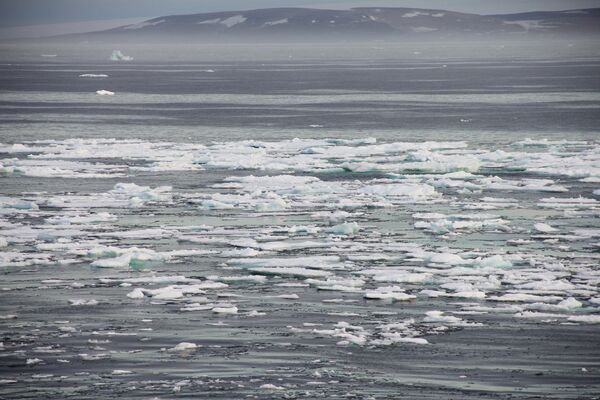Scientists have found that the amount of debris lying on the sea floor in the Arctic has doubled over the past decade, a biologist and deep-sea expert at the Alfred Wegener Institute for Polar and Marine Research, Melanie Bergmann, said on Tuesday.
Her findings were published in the scientific journal Marine Pollution Bulletin and based on photos of the seafloor taken near the AWI deep-sea observatory Hausgarten.
Bergmann studied 2,100 seafloor photographs made at a depth of 2,500 meters in the eastern Fram Strait near Hausgarten. The camera took a photograph every 30 seconds.
“When looking through our images I got the impression that plastic bags and other litter on the seafloor were seen more frequently in photos from 2011 than in those dating back to earlier years. For this reason I decided to go systematically through all photos from 2002, 2004, 2007 and 2008. Waste can be seen in around one percent of the images from 2002, primarily plastic. In the images from 2011 we made the same discovery on around two percent of the footage. The quantity of waste on the seabed has therefore doubled,” Bergmann said.
The Hausgarten photos showed more waste than was found in the deep-sea canyon near Lisbon, Portugal.
“Ship traffic has increased enormously since the ice cover began to shrink and get progressively thinner. We are now seeing three times the number of private yachts and up to 36 times more fishing vessels in the waters surrounding Spitsbergen compared to the pre-2007 period,” Bergmann said.
Bergmann added that 70 percent of the litter in some way affects flora and fauna of the seabed, reducing their growth and slowing their reproductive processes. In addition, plastic contain toxins that also affect the environment.
“Other studies have also revealed that plastic bags that sink to the seafloor can alter the gas exchange processes in this area. The sediment below then becomes a low oxygen zone, in which only few organisms survive. On the other hand, other animals use the waste as hard substratum to settle on. This allows colonization by species that previously would have found hardly any suitable substratum. This means that the waste could change the deep-sea composition of species and therefore biodiversity in the long-term,” Bergmann said.
Bergman and other scientists intend to expand the observations of the debris at the bottom of the ocean and analyze the flows of waste, such as micro-particles of plastic, which may ultimately travel up the food chain to contaminate humans.
Hausgarten is the deep-sea observatory of the Alfred Wegener Institute in the eastern Fram Strait. It consists of 16 stations covering water depths of between 1,000 and 5,500 metres. Since 1999 samples were taken annually at these stations every year during the summer months. The year-round deployment of moorings and free-falling systems that act as observation platforms on the sea bed enable seasonal measurements.


